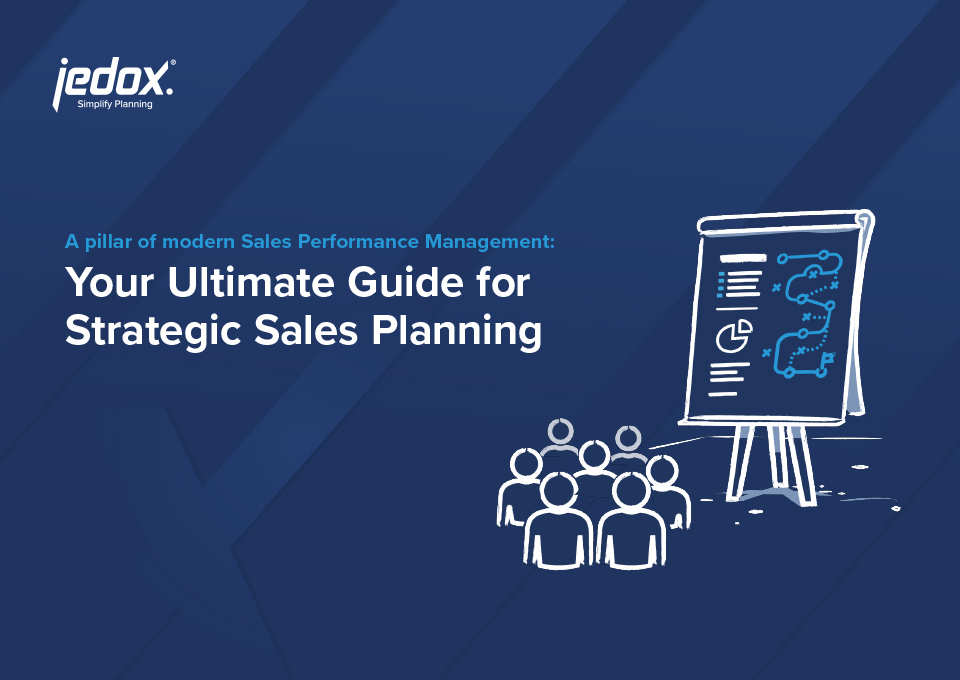
How to set and manage sales goals
From overarching sales targets to more specific sub-goals and milestones, how should they be defined? What do you need to consider? In this blog post, we look at sales goals from different perspectives and discuss what to consider when defining them.
Set sales goals that are achievable and realistic
Most everyone has goals of some type they aim to achieve. Some reach for the stars, others prefer a more modest approach. From a young age, we envision the future. Over time, we discover what is realistic, unrealistic, and reasonable in the quest to achieve our goals. We learn that it makes sense to break down each project into smaller pieces. Achievable goals give us structure and direction, motivate us to do our best, and are good for morale. What applies in one’s personal journey often applies professionally as well.
Having a realistic, or practical approach to achieving goals, especially for sales, has been shown to help maintain motivation by more clearly understanding where the journey is going and what success looks like. In most organizations, these goals, sales included, are set by executive management and key stakeholders.
Collect and prepare available information
Start with what you already have. Sales targets should always be planned bottom-up and top-down. Before this happens, it is advisable to take a look at the data already available in the company. Which key figures should be considered in order to set realistic targets? To find out, you need to be able to answer key questions:
- Who are your customers? Target market?
- What is the average length of the sales cycle?
- Are there seasonal differences in sales?
- What are the closing, profit and loss ratios?
- What is the market potential?
- What is your team’s capacity and resources?
If you know exactly who your customers are, there may be upselling potential – depending on the industry – that you can tap into. You’ll also know which potential new customers are more likely and which are less likely to spend resources on. Having this information on the sales cycle provides insight into how quickly prospects can become new customers. Are there major differences in the sales cycles of individual products, product groups, regions, customer segments or sales teams?
Valuable insights can also be discovered in the answers to these questions. In addition, it makes sense to look for dependencies, as described above on the basis of sales cycles. In this way, an ideal customer profile (ICP) or another go-to-market matrix can be developed.
Revenue target as the foundation for other sales targets
The core of sales targets is the revenue target, which is closely related to targeted business growth. An idea of how to best achieve it is much easier to develop with relevant information easily at hand. Once the sales target for a period has been found (usually as an annual target), it must be broken down. This applies to the various sales offices, teams and employees as well as time periods.
These should also be carefully segmented, otherwise, frustration can quickly grow, especially with large goals, because they seem unattainable and lack direction. If they are broken down into smaller milestones such as daily, weekly, or monthly goals, they suddenly seem more achievable. Of course, this requires the overall goal to be realistically defined. How small the time horizon should be, depends heavily on the industry and the unique needs of your organization.
How the overarching and segmented sales targets are to be achieved should also be kept in mind. What percentage comes from reducing the loss ratio? How much can be achieved by upselling? How many new customers are needed?
Actionable sub-plans motivate and serve the overall sales goal
Using this info to develop actionable plans that colleagues in sales can implement is key. To ensure that these are achievable and the sales team stays motivated, it is important to consider your sales compensation models. In addition to bonuses for completed sales, incentives can be set for individual milestones and stretch goals.
To give the goals a meaningful framework, sales territories should be tailored and sales quotas should be defined. This ensures clear responsibilities, commitments and ideal utilization of your sales team’s capacity and resources. In addition, sales KPIs should be set up to measure the performance of sales teams.
The prerequisite is a constantly updated overview of the balance of capacity, territories, and quotas. If an imbalance arises or your top salespeople feel they are at a disadvantage, you risk losing one of your most valuable resources. To gain this overview, a single, unified view of all relevant data is a must.
Monitor progress and manage proactively
In addition to using Excel, many sales departments use specialized sales performance management software solutions. As a result, data and information can be found in different places and often in different versions. To obtain a comprehensive, unified picture, data has to be prepared and merged manually again and again. Since this is a time-consuming task, often only outdated data is available. The ability to make proactive decisions about business performance vanishes.
A software solution that offers a single source of truth and dramatically reduces the need for manual processing provides the opportunity to bridge that gap. This allows concrete plans to be drawn up based on relevant data and progress to be continuously monitored with the power of automated sales forecasts. If deviations are easily spotted, it is easy to find out where they are coming from. Adjustments to plans to achieve targets can then be implemented quickly. Avoid future problems, reduce frustration, and enable your salespeople to succeed.
To define sales goals in a way that sets your team up for success, modern sales performance management offers a solution. The right Sales Performance Management solution will save you measurable time on data preparation, provide a solid basis for more accurate planning and support long-term success across the organization.



